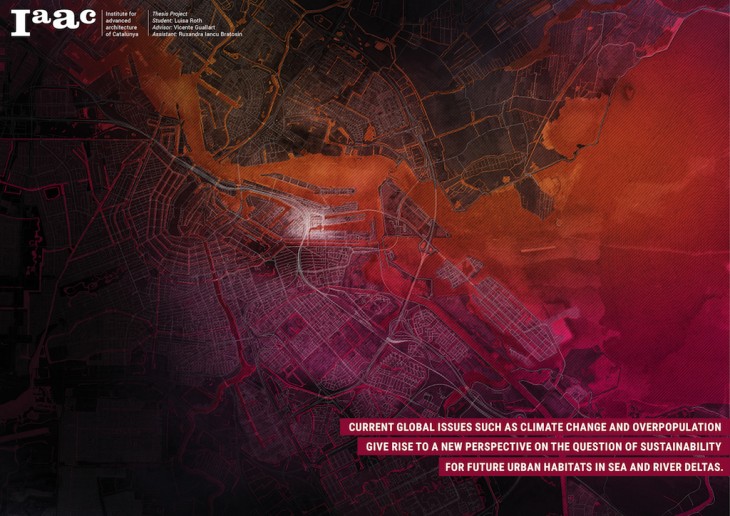
Currently climate change and global warming caused by destructive human intervention is shattering our planet’s life system. As a matter of fact, especially low-lying urban habitats in coastal areas will be critically endangered by rising sea levels and flood events in the near future. At the same time, the world is facing the most radical demographic shift in human history.
How can we defeat the colliding issues of overpopulation and land shortage and identify sustainable solutions for offshore cities such as Amsterdam.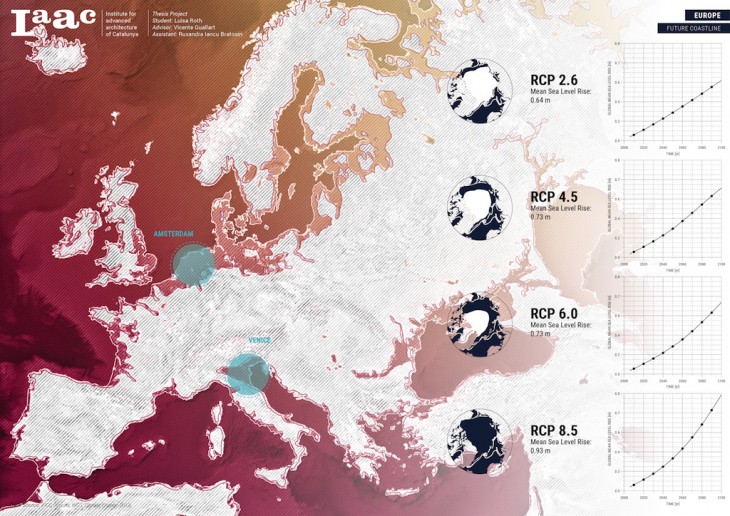
My research is based on a future simulation model developed by IPCC Assessment Reports on Climate Change which frames four different future scenarios by evaluating various environmental factors. The best case scenario indicated by IPCC Reports implies a 0.64 m rise of sea levels, whereas the worst case predicts an increase by 0.93 m until the end of this century. These changes will result in drastic transformations of the current global coastline.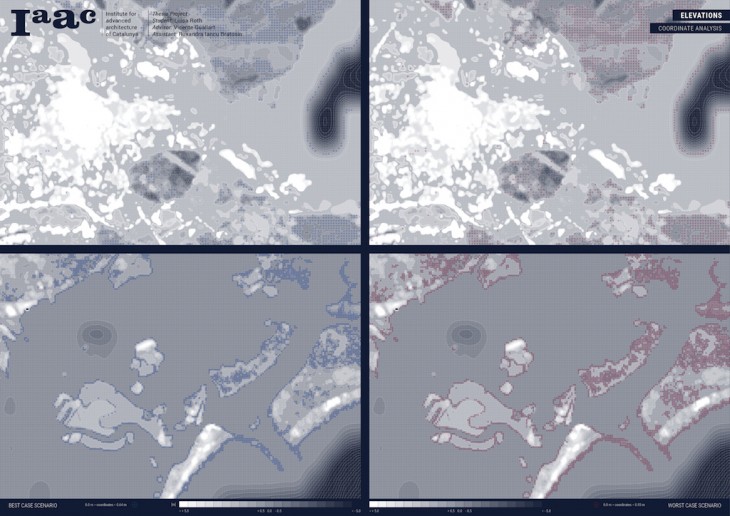
According to the best and worst case scenario predictions by IPCC Reports, the sites of Venice and Amsterdam were chosen and evaluated according to specific topographic data. The foregoing diagram exhibit all coordinates which will be affected in the best (blue marks) or worst (red marks) future scenario.
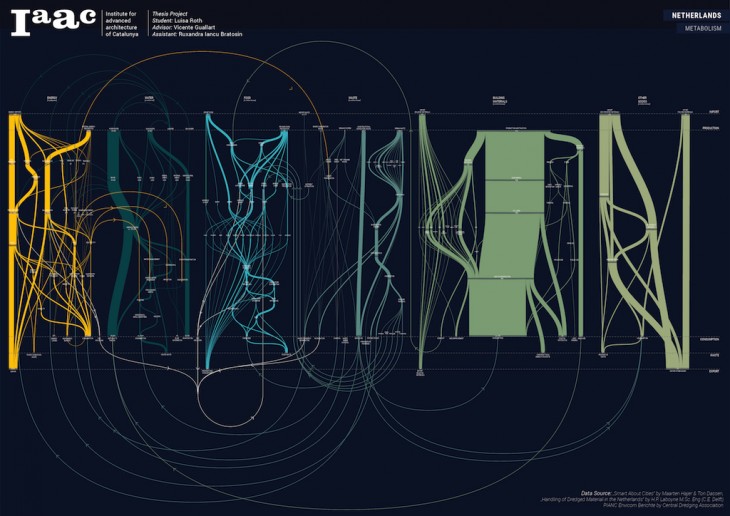
This research proposal aims to explore and define environmental and economic factors which are essential for prosperity and sustainability of coastal habitats suffering from drastic environmental changes. As part of this research the metabolism of coastal cities will be explored to establish sustainable habitats for future civilizations in a post apocalyptic world, moving towards a circular metabolism.
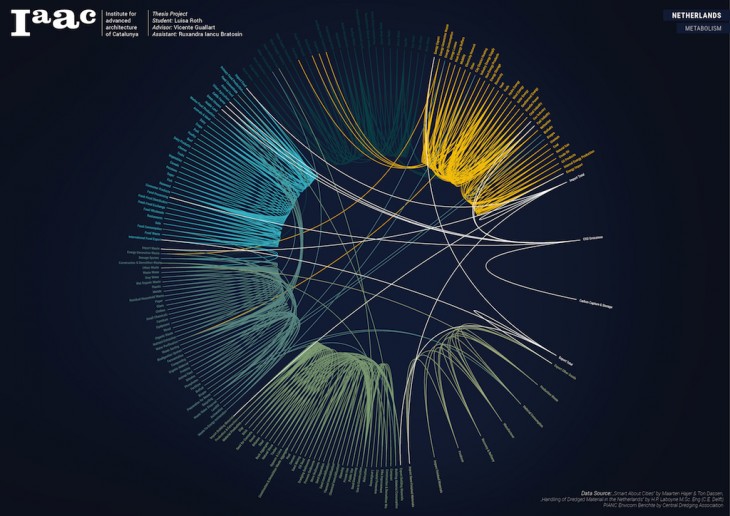
This research proposes to rethink traditional urban structures in terms of functionality and efficiency regarding its productive infrastructure including energy, food, water, waste, construction materials, and other goods. The objective of this research is to explore and optimize the metabolic nexus of cities and establish solutions for a future utopia based on the functional principles of natural ecosystems.
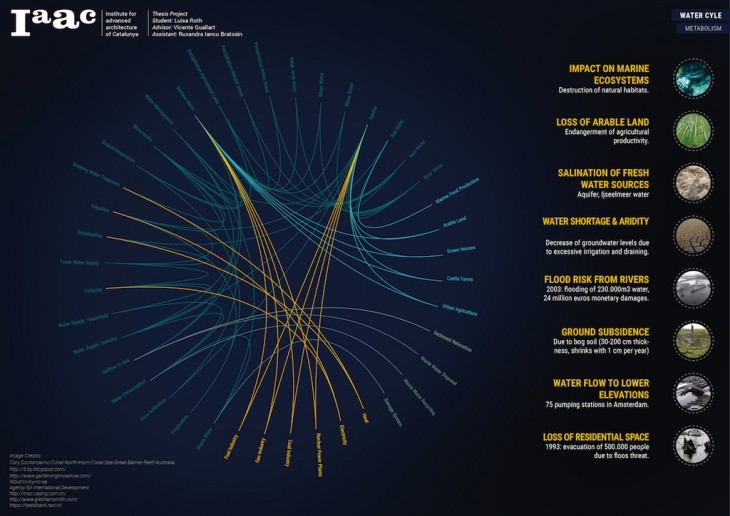
Focussing on the water cycle the interconnectedness of water flows with other metabolic subjects such as energy, food and waste can be identified. The water cycle is particularly vulnerable to flood events and rising sea levels.
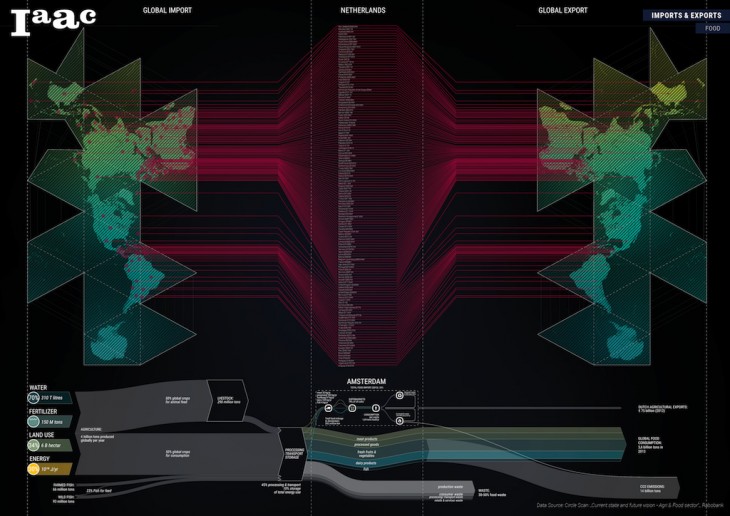
The Netherlands actively participate in the global trade network which strongly influences the regional food cycle. Enormous amounts of food products are regularly exported to and also imported from a great number of global trading partners.
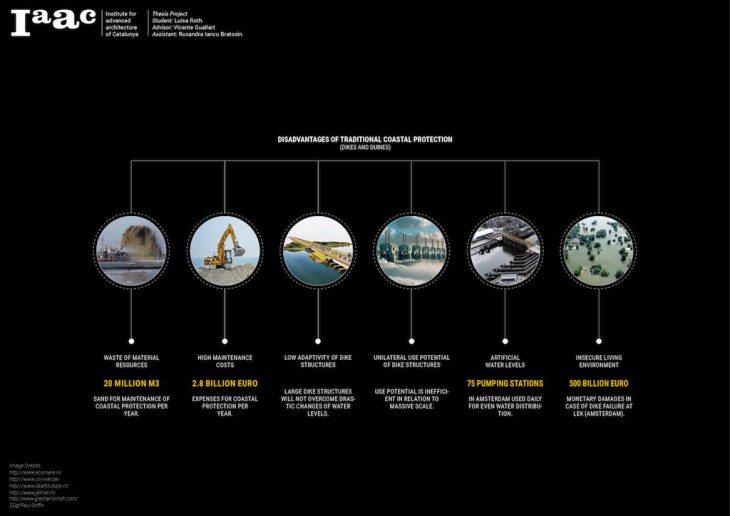
The present and most common strategy to tackle the global issue of rising sea levels is prevention and protection. The dutch landscape in particular is dominated by a massive dyke network which requires constant maintenance and upgrading. The certain disadvantages of such strategies are great financial expenses and an enormous waste of resources (primarily sand) for construction.
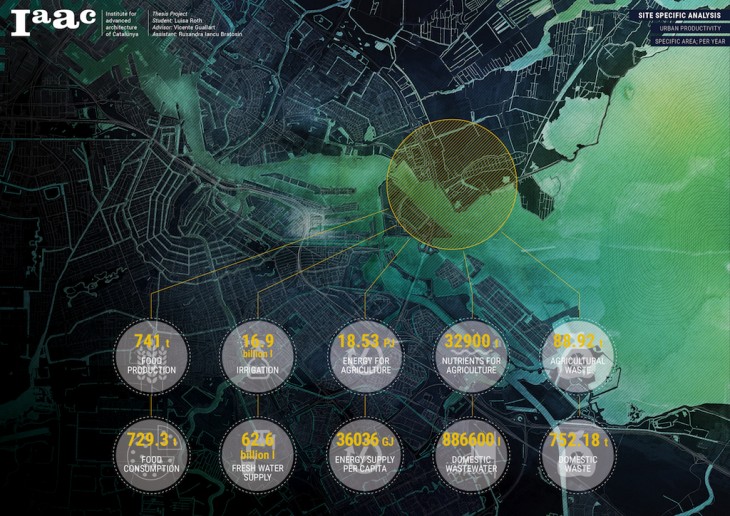
Within this research the main focus has been on the city of Amsterdam, explicitly on the areas touching the coast. Amsterdam, infact, has shown the fastest population growth rate amongst major Dutch cities.
The suburban regions in the north-west of the center are in close proximity to the Ijmeer, an artificial lake basin which is separated by the North Sea only with the aid of the Afsluitdijk. The area of focus is highly valuable in terms of agricultural production as it has an outcome of 741 tonnes of food per year. 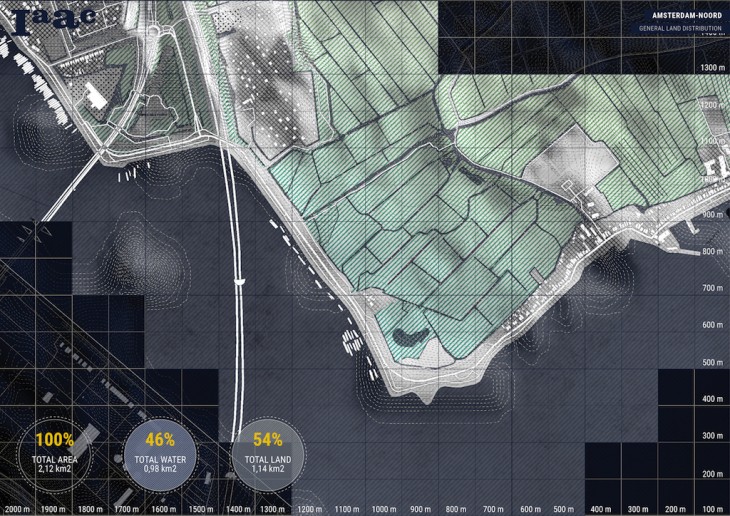
The chosen region has a total area of 2.12 km2; 54 percent of which are land surface equally with 1.14 km2.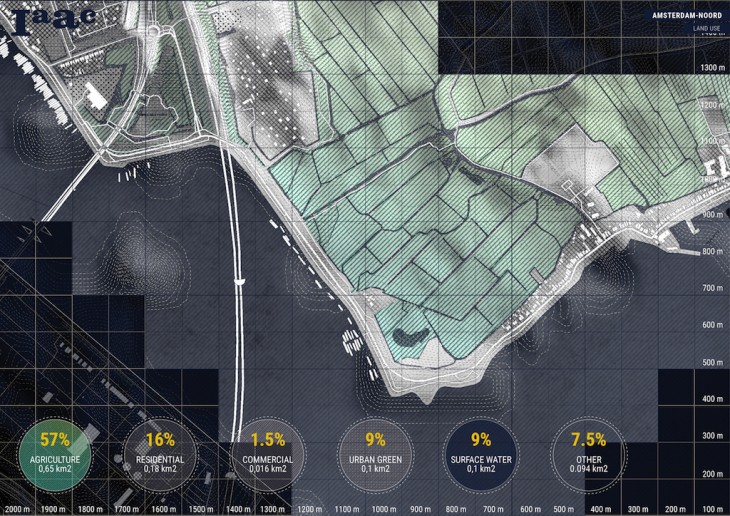
The land area is primarily used for agriculture as 57 percent is arable land. The residential zone encompasses an area of 16 percent whereas 9 percent of the land surface is covered with fresh water sources.
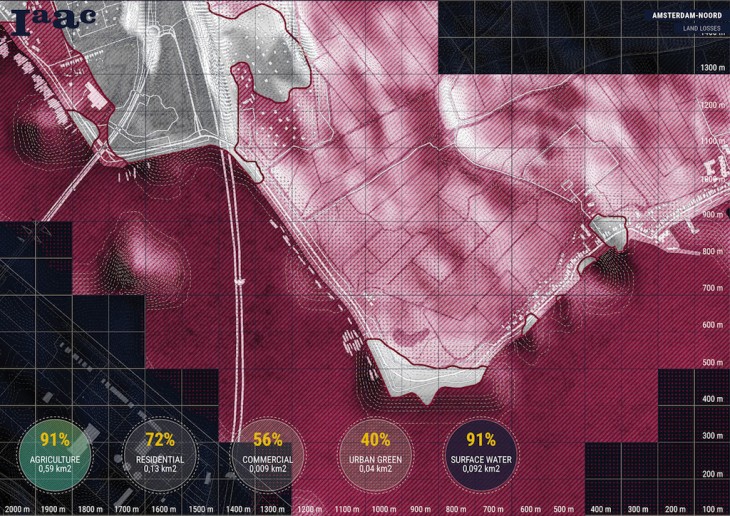
The red zone indicates a sector which will potentially be completely flooded in the worst predicted future scenario. Besides agricultural land losses of 20 percent the flooding will bury approximately 72 percent of the residential and commercial space. Aggravating this situation, most fresh water sources will be eliminated and salination will potentially cause further damage.
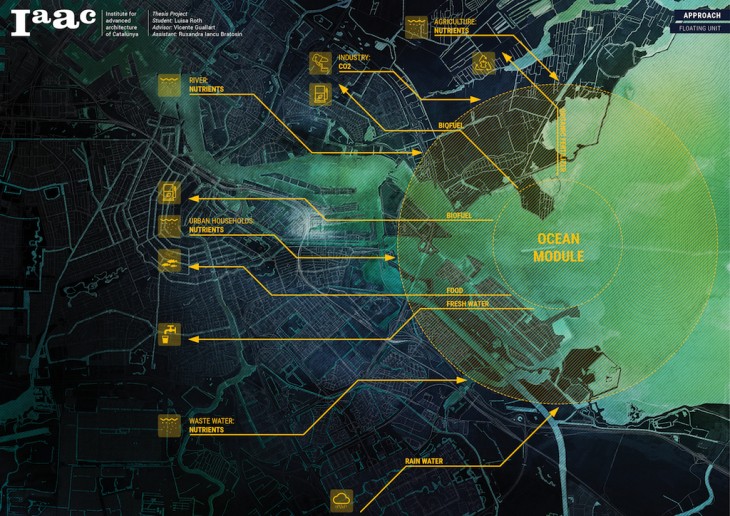
How can urban habitats adapt to predictable changes of the environment and reach a symbiotic relationship with their natural surroundings? Could an extended urbanization of the sea surface be a solution for a coastal city such as Amsterdam suffering from population increase and climatic stress?
The aim of this research is to establish a complex, adaptive and autonomous urban module based on diversity and productivity as a solution for future habitation. The module should be able to sustain itself, but also contribute to other parts of the existing city.
As the urbanization of the sea surface offers new spatial opportunities, how can a city such as Amsterdam take advantage of new resources and constellations in order to become more productive and self-sufficient?
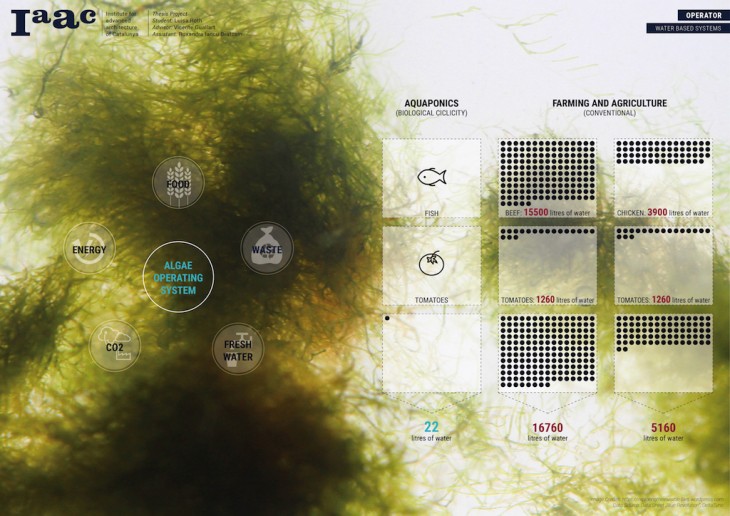
As the functionality of a natural ecosystem is of elementary significance for any kind of life, the aim of this research is to investigate design strategies for future habitats as adaptive urban ecosystems. The vitality of an ecosystem depends on permanent interaction to provide optimal energy supply. The aim is to generate self-sustaining urban habitats with the ability of networking and sharing within a productive operating system (such as aquaponics or algae based systems).
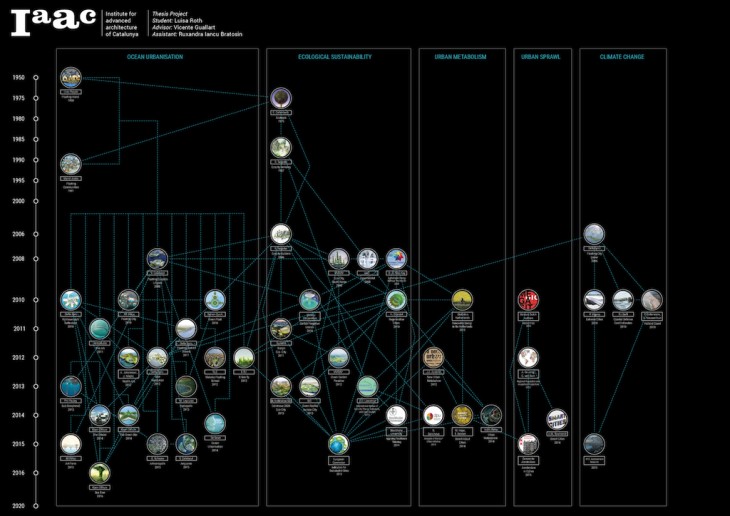
By now people begin to realize that radical changes have to be made considering human lifestyle to conserve and maintain our natural heritage. Consequently the philosophy of Green Design has found widespread support in major parts of our society. Numerous of contemporary ecological ideas and approaches can be attributed to green concepts.
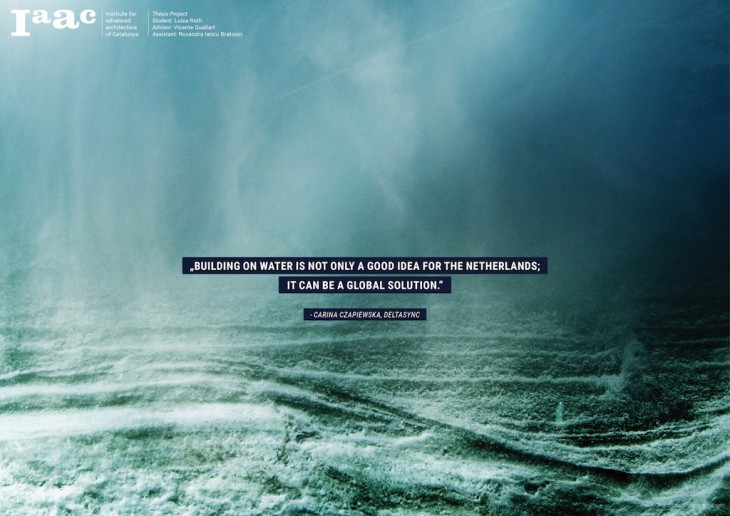
In the Netherlands, planning strategies for an urbanization of the sea surface have emerged over the past years to defeat overpopulation and land shortage as more than two-thirds of the dutch population lives below sea level. Several companies are currently exploring the potential of ocean urbanization as a new strategy for urban adaptation. As stated by Carina Czapiewska (DeltaSync) „Building on water is not only a good idea for the Netherlands; it can be a global solution.
Student: Luisa Roth
Faculty: Vicente Guallart, Ruxandra Iancu Bratosin
